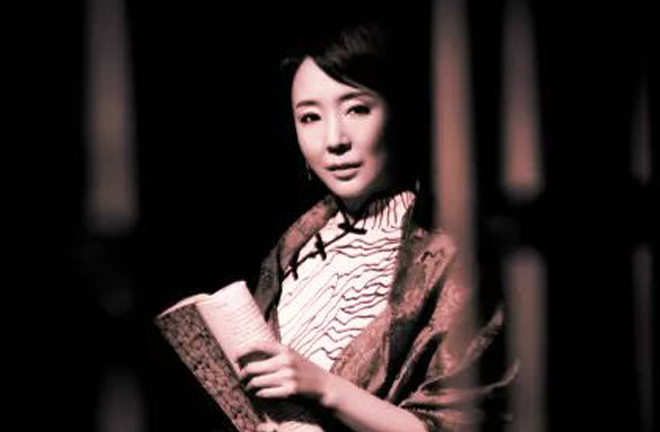Overseas Chinese-language literature calls for further study

Yan Geling, an influential overseas Chinese-language writer who has produced a number of bestsellers Photo: FILE
It was in the 1950s and 1960s when overseas Chinese-language literature became an independent literary phenomenon. The period featured literary works by such overseas students as Yu Lihua, author of Again the Palm Trees. Their works set a nostalgic tone for the genre.
The identity of overseas Chinese-language writers is constantly changing. Just consider overseas students: they may only be staying abroad for a period of time, and their works written at that time can be considered overseas Chinese-language literature. Meanwhile, books written by Chinese writers living abroad, on an academic visit, or accompanying a person studying at school overseas can also be counted.
Generally speaking, there have been three generations of overseas Chinese-language writers since the 1980s. Among the significant writers of the first generation were Yan Geling, Zha Jianying, Dai Sijie, Hong Ying and Su Wei. They were famous young writers before they went abroad in the late 1980s and early 90s, and they continued to produce influential works overseas before the 21st century.
The second generation included Zhang Ling, Chen He, Chen Qian and Yuan Jingmei. These writers were about the same age as the first generation. Their works are sometimes called “the new Chinese immigrant literature” or “the new overseas Chinese-language literature.” Being called “new” doesn’t necessarily mean they were younger. The “family tree” of overseas Chinese-language writers is not clearly determined by writers’ age. It’s common for older writers to join in the “new generation of writers.” For instance, writers of the third generation range from being born in the 1960s to in the 1990s.
The third generation is on the rise, and their works continue to make it into literary periodicals and onto best-sellers lists. The first edition of Huacheng Magazine in 2019 has rolled out a section for “the new overseas Chinese-language writers,” introducing writers including Ni Zhan’ge and He Wapi, both of whom live in North America, a key birthplace for traditional overseas Chinese-language literature. The section also covers works written by young writers such as Hu Wei in France and Wang Bang in the UK.
Hong Kong Literature, Issue 1, 2019, published prose written by 12 overseas writers including Xuan Shuzheng and Liu Huangtian. Later, in Issue 2 of 2019, Furong also published novels written by Zhangqun, Chen Jiu and Other overseas writers. Furthermore, in its Issue 9, Hong Kong Literature brought out a “collection of fiction by overseas Chinese-language writers,” and published novels by six writers. Also in the first half of 2019, Xia Shang, a Chinese writer living in the US, planned and published 2019 Collection of Novels by Overseas Chinese-Language Writers, which includes works by both famous writers and emerging writers. Also worth noting is that although Liu Ying’s, Xia Shang’s and Li Fengqun’s works are in this book, they have seldom been identified as overseas Chinese-language writers.
In terms of literary genre, the third generation differs from the other two in that its key writers are better at writing short-to-medium length novels. Another difference is that the newer generation is witnessing the peaceful rise of China in the new age of globalization. The young writers share the benefits brought by China’s reform and opening up. Therefore, their writings not only reflect the new image of China, but also show the new changes in the relationship between the world and the writers themselves.
Although elements of “living in a foreign land,” “leaving one’s native place,” “marginalization” and “loneliness” still exist in some of these writers’ pieces, they carry different meanings from before. They write about these elements through the lens of individual experience instead of a common experience.
New media has also played a role in spreading the works of the third generation, who have enjoyed an entirely different platform from their predecessors. The internet enables their works to break the geographic limit and become more widely received by readers all over the world. By helping them increase their influence, new media has helped these writers overcome the loneliness of being in a foreign language environment.
To some extent, overseas Chinese-language literature was at its peak since the literature of the May Fourth Movement of 1919. Overseas literature has long been divided from domestic literature. However, seldom have literature historians singled out overseas Chinese-language literature created before 1949.
Overseas Chinese literature is not equivalent to overseas Chinese-language literature, since overseas Chinese literature also includes non-Chinese-language writings by writers like Maxine Hong Kingston, Amy Tan and Ha Jin. In other words, ethnic Chinese literature is a broader concept than overseas Chinese-language literature.
Literary studies in this arena have so far mainly focused on the older generations of writers, but I believe we should begin to study the third generation. Meanwhile, the traditional research approach of generalizing these writers based on their common experience as a group is outdated, and it fails to display its new feature—individuality. I think researchers need to broaden their horizons, start to study more writers, come up with a new family tree for overseas Chinese-language literature and update the research paradigm. Only by doing this can we deepen our research in this field.
Zhu Jing is from the School of Chinese Language and Culture at Nanjing Normal University.
edited by BEI LE

 PRINT
PRINT CLOSE
CLOSE